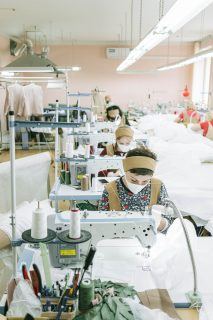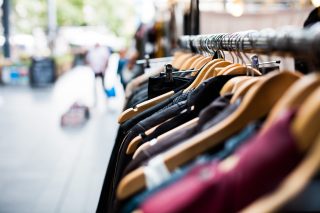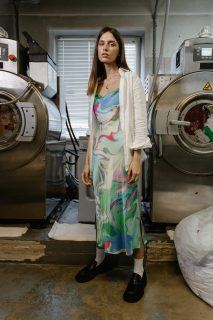Recently, there has been a massive drive for sustainability. But who exactly is driving this new consumer focus? We’re a demanding demographic. We still care about trends and our clothing to reflect that. Most of us, though we feel guilty about it, still often visit fast fashion stores (especially during sales) to get a bargain. We know we shouldn’t be supporting these stores and yet, we continue to use our major purchasing power to do just that. But why are we doing it and what are we looking for when it comes to sustainability? Do we believe that large retailers are taking proper steps towards sustainability?
Who is the new consumer?
But who’s a Gen Z and who’s a Millennial and what’s the difference between the two? It’s actually much less complicated than it sounds. Millennials are the generation just before Gen. Z. Millennials include anyone born between 1980 and 1995. On the other hand, Gen Z includes anyone born between 1996 and the mid-2000s (sources differ on the exact cut-off year).

Photo by Anna Shvets from Pexels
Personally, I was born in 1994 which means that I am right on the cusp between Gen Z and Millennials. It makes a lot of sense that these would be the consumer groups ‘in power’. Millennials have already been part of the work world for a few years now and Gen Z’s are currently entering the workplace and/or job market. This means that Gen Z’s and Millennials’ decisions have a substantial economic impact as they are now the major target market for brands.
What does the new consumer want? Is it sustainability?
Perhaps one of the most difficult questions to answer is what this new consumer is after. Unfortunately, largely, Gen Z and Millennials are still trend-driven and thus, fast fashion stores remain popular and powerful. Another clever move on the side of fast fashion retailers is the introduction of ‘sustainable’ and recycled materials. That way, you get your fast fashion fix but you don’t have to feel as guilty right? This is still a problem though.
Many of the younger consumers, despite buying from these brands, question their authenticity and transparency. Can big brands ever really be sustainable? Even in the case that there is no greenwashing going on, many of these brands still couldn’t withstand scrutiny into ethics around where and how clothing is made. Many fast-fashion chains, in order to reduce prices, pay less than minimum wage to factory workers where clothing is made and may even be making use of sweatshops.

Photo by Ivan Samkov from Pexels
Rather unsurprisingly, consumers like myself aren’t too fond of this. But does that lead us to shy away from fast fashion? Well, not exactly. As a young 20 something woman (I’m really on the cusp between Gen Z and Millennials), who attends a fashion school, I can see that there are large strides being made and things are moving in the right direction. I have seen my friends and peers battle when making fashion choices.
On one hand, everyone wants to follow the newest trends. On the other hand, we are all highly aware of the impact that this trend-hungry industry has on the planet. My friends and I will hotly debate the ethics around fast fashion brands but are also still willing to and indeed (perhaps guiltily) enjoy the process of browsing and buying from our favorite chains.
A new dawn
So, what do these new consumers like myself and my friends want? What is the issue here? It is only fairly recently that slow fashion and sustainability have become ‘fashionable’ and a major topic of discussion. Until then, companies were content to simply continue offering consumers what they wanted at the lowest possible prices. This is despite the adverse impact on the planet and climate change. Fast fashion outlets are often criticized for their focus on profit margins. However, ultimately, it’s important to remember that they are companies that need to make money in order to survive. Their demise would see hundreds of thousands if not millions of job losses across the board.

Photo by Liza Summer from Pexels
So, is that why we don’t want to stop going to our favorite chains? Or is it price-related, are we, as a consumer group, simply not willing (or able) to pay the higher price point? According to Vogue, price is definitely not the issue here. Both Millennials and Gen Z’s are willing to pay more for a garment that is sustainable. Luckily, your favorite fast-fashion chains are making changes. Brands, particularly H&M and Zara have already set sustainability plans in motion and are making the changes that consumers like myself are requesting.
However, when it comes to large corporations, it’s going to be much slower than it might be with a small, local brand. So, we return to slow fashion as a way in which to experience the thrill of new without the same level of detriment to the planet. But slow fashion isn’t the only way in which Millennials and Gen Z’s are getting their fashion fix.
New is old and old is back in
Happily, despite still sneaking into the sales sections of fast-fashion chains, there are other options when it comes to mixing up your wardrobe. Buying second-hand clothing as well as vintage pieces is an easy and sustainable way to mix it up without harming the planet. It’s great to think that, whilst you might have tired of a certain piece, there’s likely someone else who would love it. Sites and apps for the resale of secondhand clothing have taken off in the past few years. Through shopping second-hand, the life cycle of clothing items is extended substantially. Ultimately, what we want to avoid at all costs is the clothing going to landfills.

Photo by Arturo Rey on Unsplash
So many resources go into the making and manufacturing of the fabrics and clothing we wear. So, it’s vital that we keep wearing what we have for as long as possible. Generations even younger than us will continue to reassess their relationship with fashion and its facets. If large companies keep to their word and make the changes they have promised, it is likely that the fashion industry can change for the better. Currently, it’s the second-largest polluter in the world. But making this change isn’t only in the hands of large corporations and your favorite fashion chains.
What can we as consumers do?
If you, like me, have found yourself browsing through fast-fashion retailers, fear not. It’s never all bad news. All we as consumers need to do is change our mindsets. This is obviously more difficult than it might first appear but trust me, it’s worth the effort in the long run. If you are buying from large chains, it’s important to assess a few things before you commit to the purchase.
-
Really consider its use-value within your current wardrobe
Do you have a lot of other pieces that would work with it? Or would you need to essentially re-build your entire wardrobe to make it work? In the case that the latter is true, no matter how pretty it might be, it’s time to put it down.
-
Is it a classic piece that is built to last or a trend piece that will likely only last a season?

Photo by Artificial Photography on Unsplash
If the former is true, consider how well it is made. You want core items in your wardrobe that will last for as long as possible. These are the base pieces that you can use to mix and match with trend pieces. They are the basis of all your looks and should work flawlessly across years and (if possible) seasons.
If it’s a trend piece, it will likely be more difficult to sell on once you’re finished with it. Don’t spend too much on these high fashion, fad pieces, and keep yourself in check. Buy as few trend pieces as possible and, if possible, make use of a ‘classic with a twist’. For example, shoulder pads are back in, but a white t-shirt with shoulder pads is likely still a better long-term buy than the tie-dye version.
-
What fabric is it made out of?
This isn’t just about the resources associated with the making of the fabric. It’s also about comfort. If you prefer wearing natural fibers, it’s best to make sure that your wardrobe isn’t full of items that you like but are uncomfortable. If you don’t feel comfortable in it in the change room, you aren’t going to be comfortable in the outside world. Some garments also make use of recycled or organic fibers which are better for the environment so it’s best to spend a bit more and opt for those instead if you can.

Photo by Tima Miroshnichenko from Pexels
Remember that, as consumers, we show the company what we want through our purchases. If more consumers are only willing to buy natural or organic fibers, the chances are that the companies will include more of those types of fabrics.
-
If you have had enough of an item or it no longer fits, don’t just throw it away.
Yes, it may be damaged and beyond repair. However, it’s best to investigate whether it is made of recyclable material. Some stores even have clothing recycling programs. Otherwise, if it’s still in good condition, sell it on or donate it to charity. Selling clothing on is great as the garment gets to go on into someone else’s wardrobe where it will be worn and appreciated. Essentially, if they’re made well enough, even fast fashion garments can have multiple lives.
References
https://www.vogue.co.uk/arts-and-lifestyle/bc/facebook-meet-the-future
https://www.teenvogue.com/tag/sustainable-fashion
https://www.adeccousa.com/employers/resources/generation-z-vs-millennials-infographic/
https://www.vogue.in/fashion/content/why-young-shoppers-are-investing-in-sustainability
https://www.teenvogue.com/story/standearth-report-fashion-industry-climate-commitments



![women [longevity live]](https://longevitylive.com/wp-content/uploads/2020/01/photo-of-women-walking-down-the-street-1116984-100x100.jpg)










